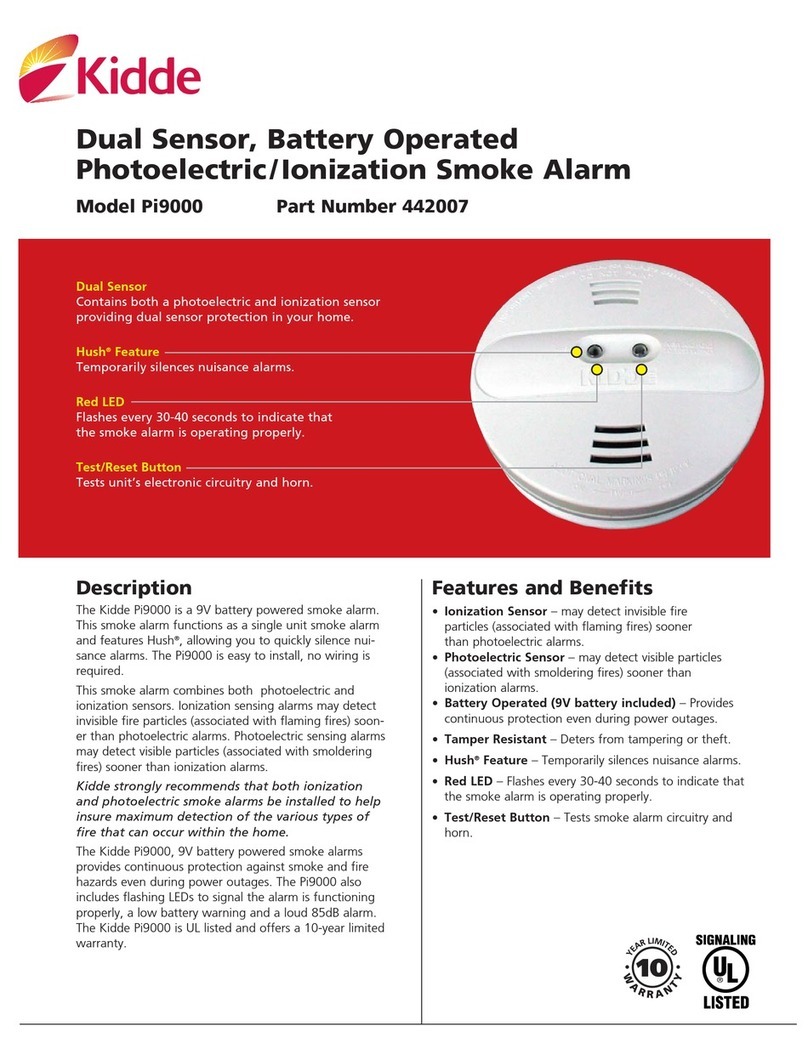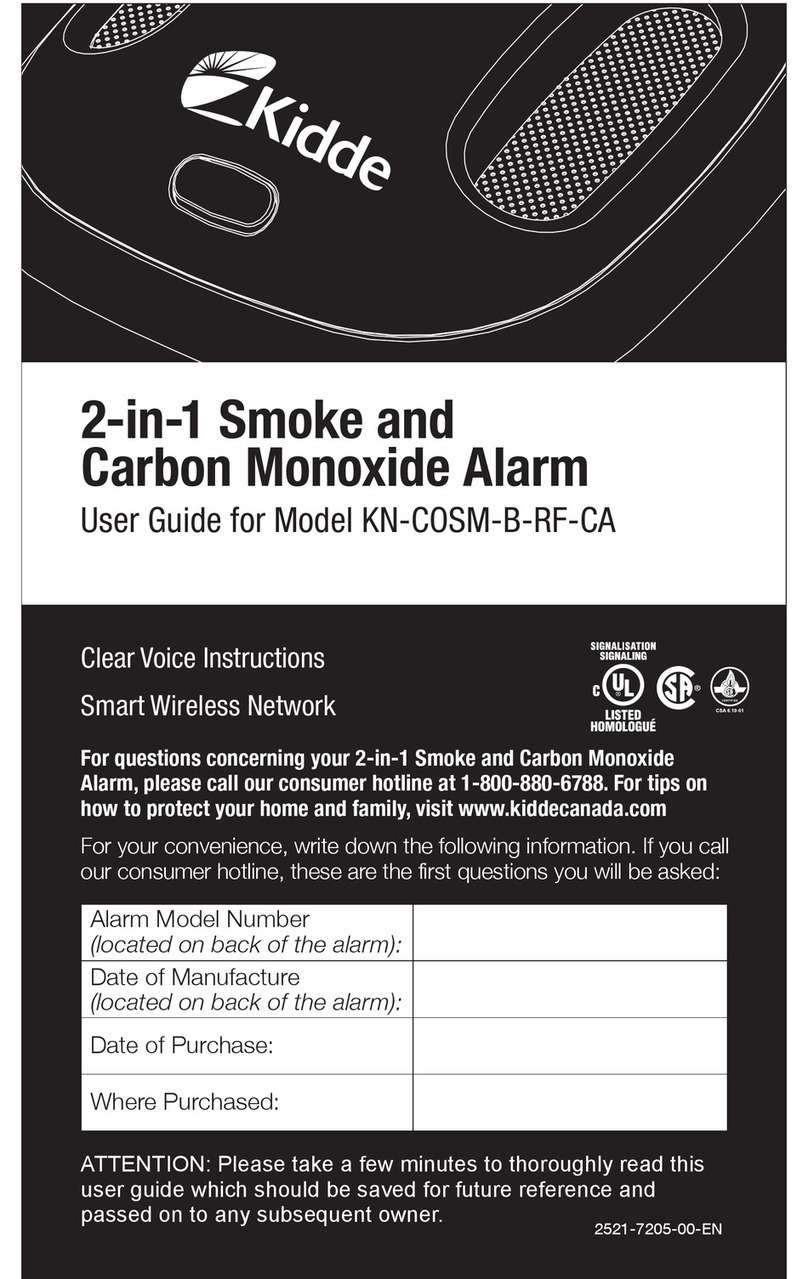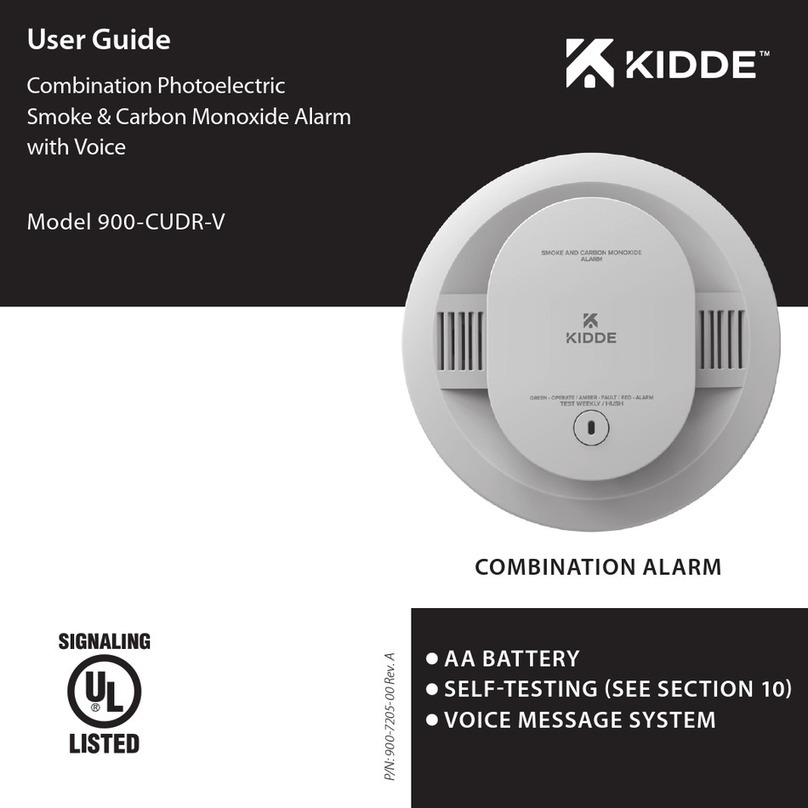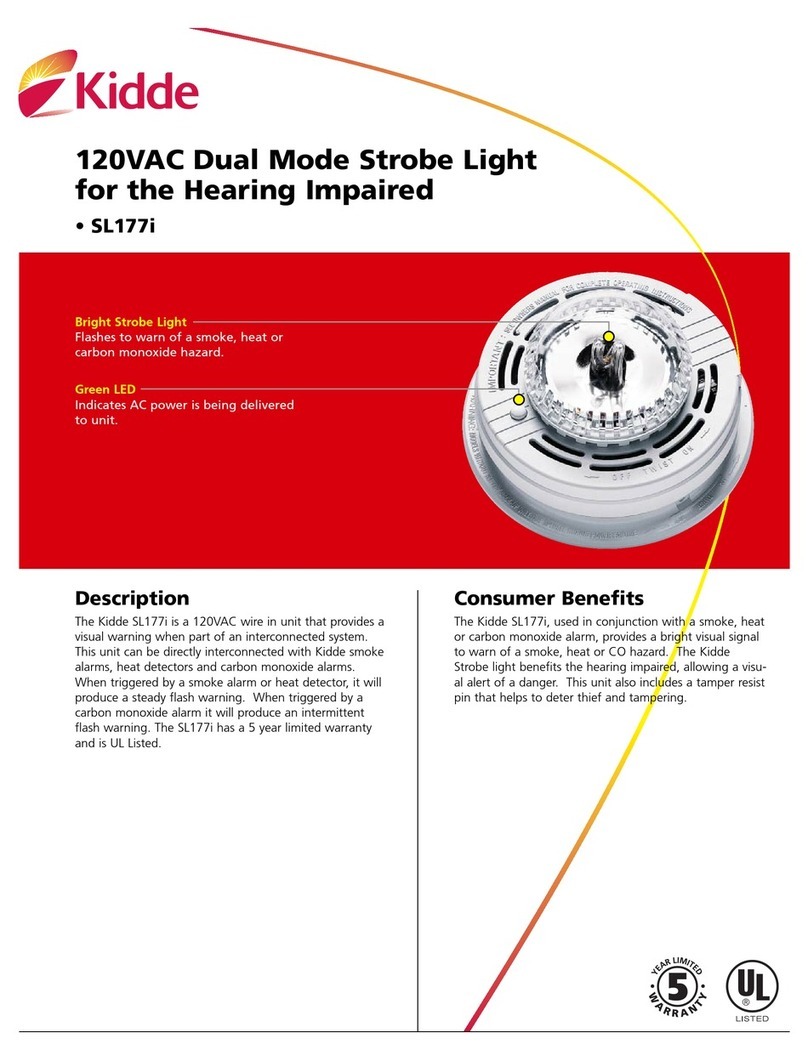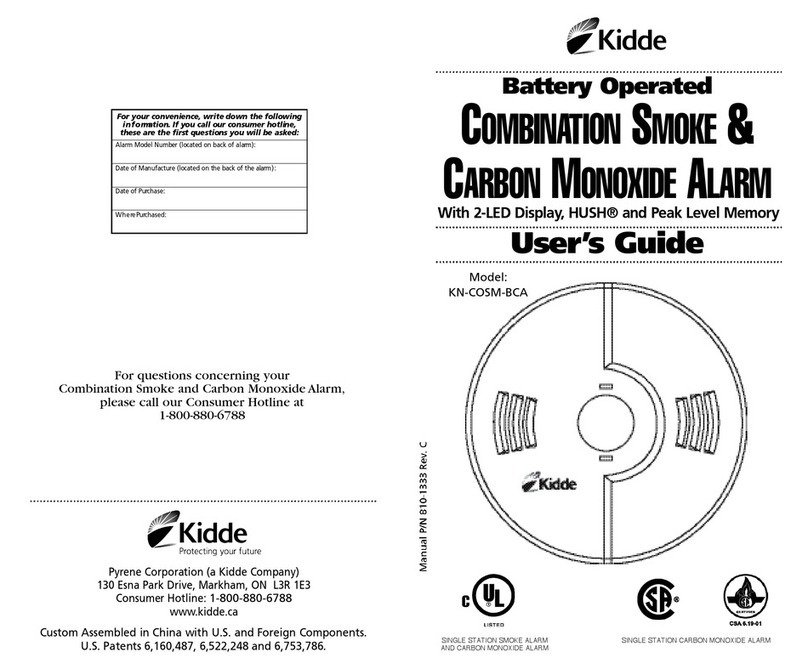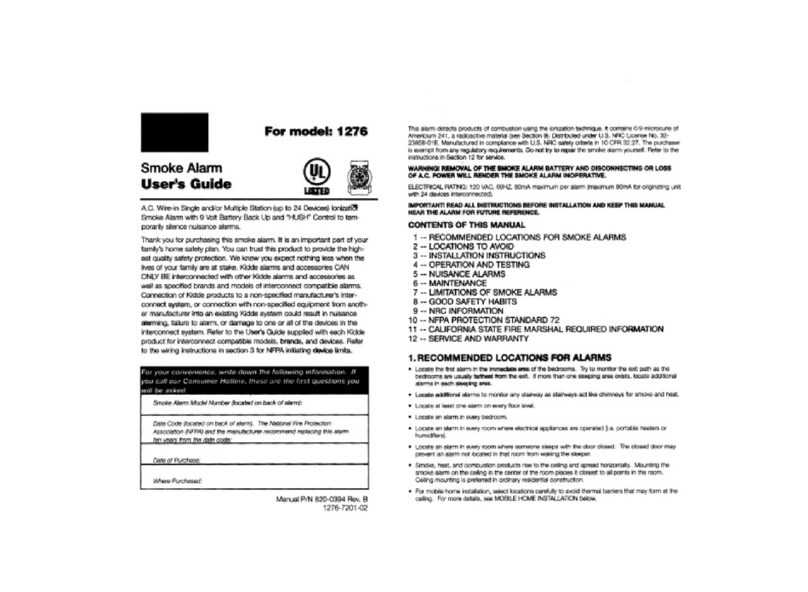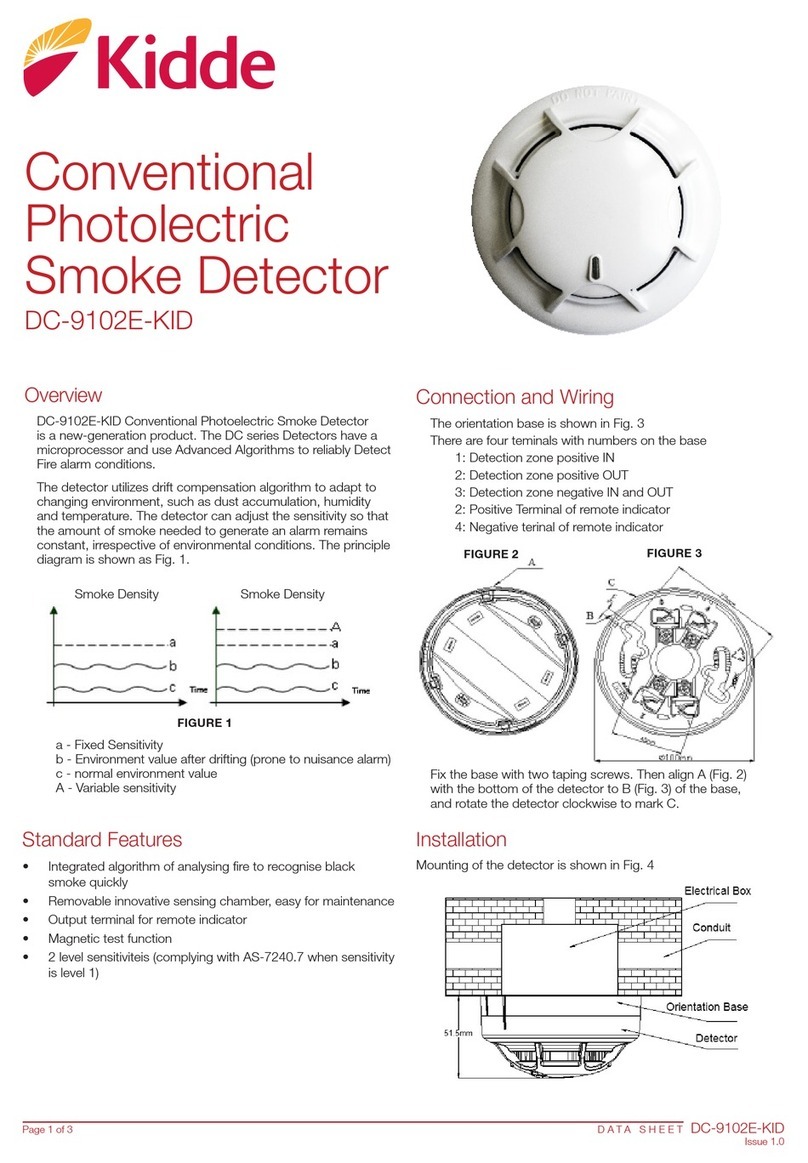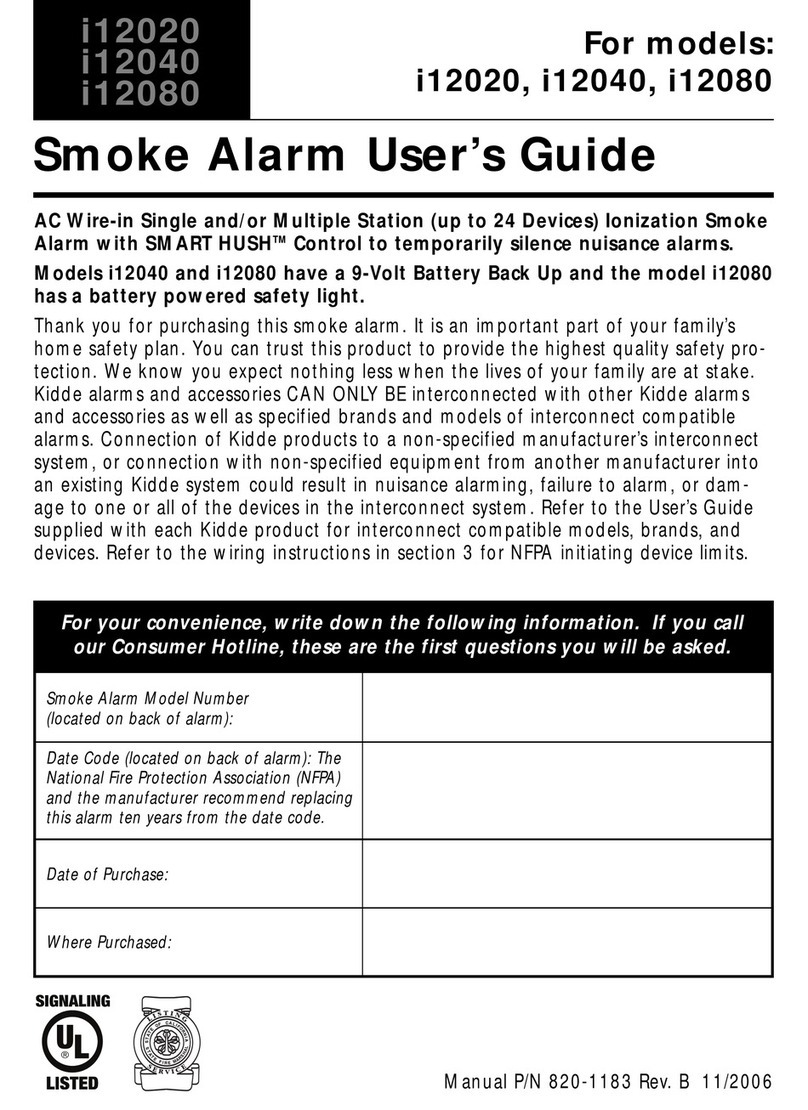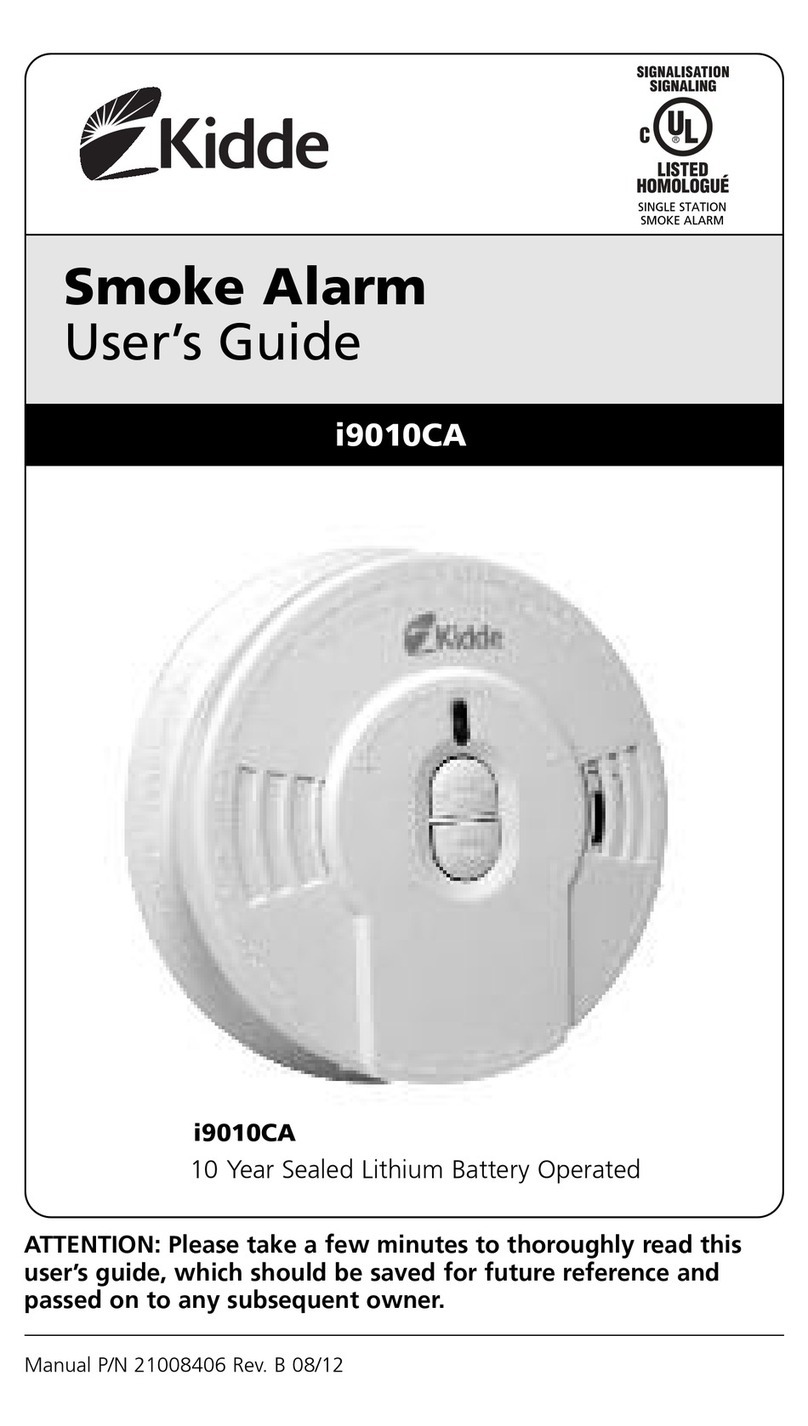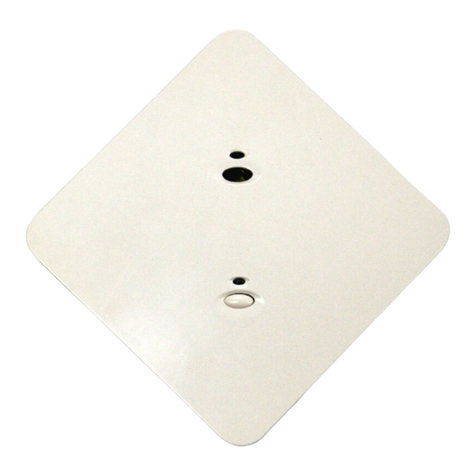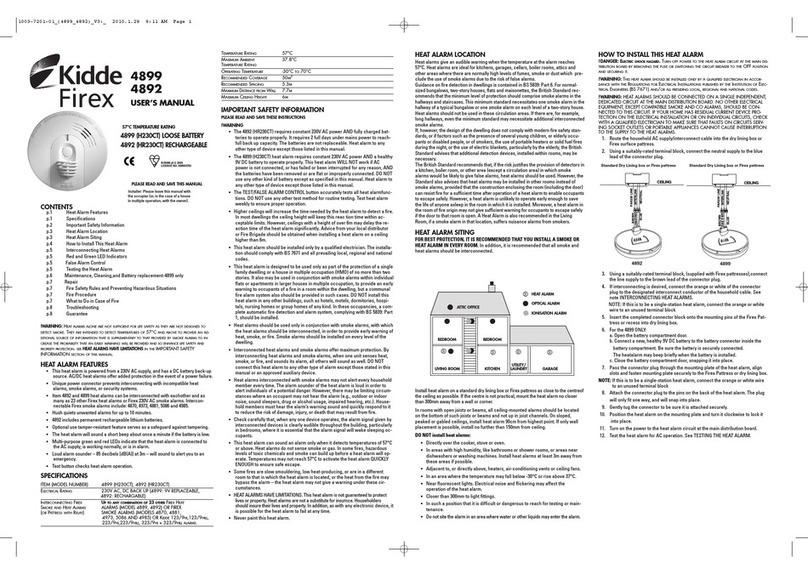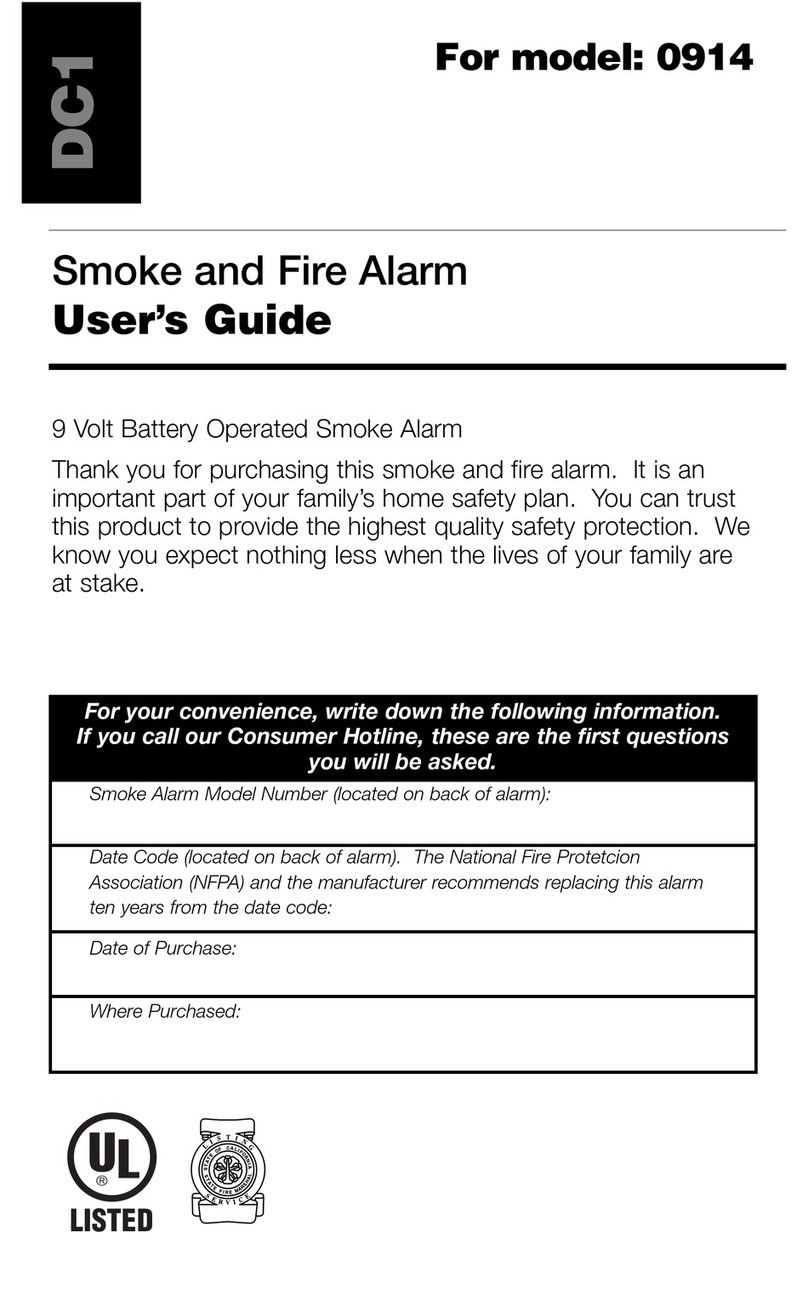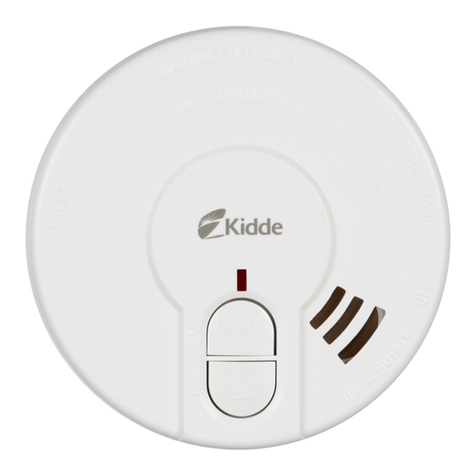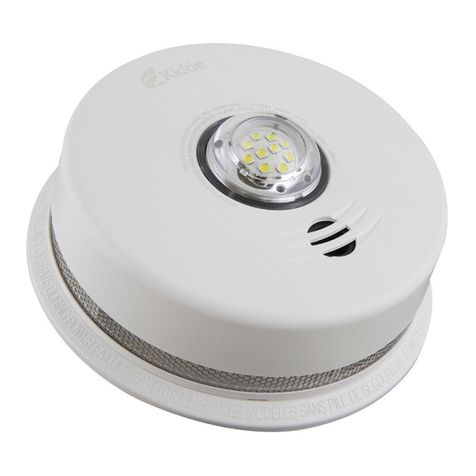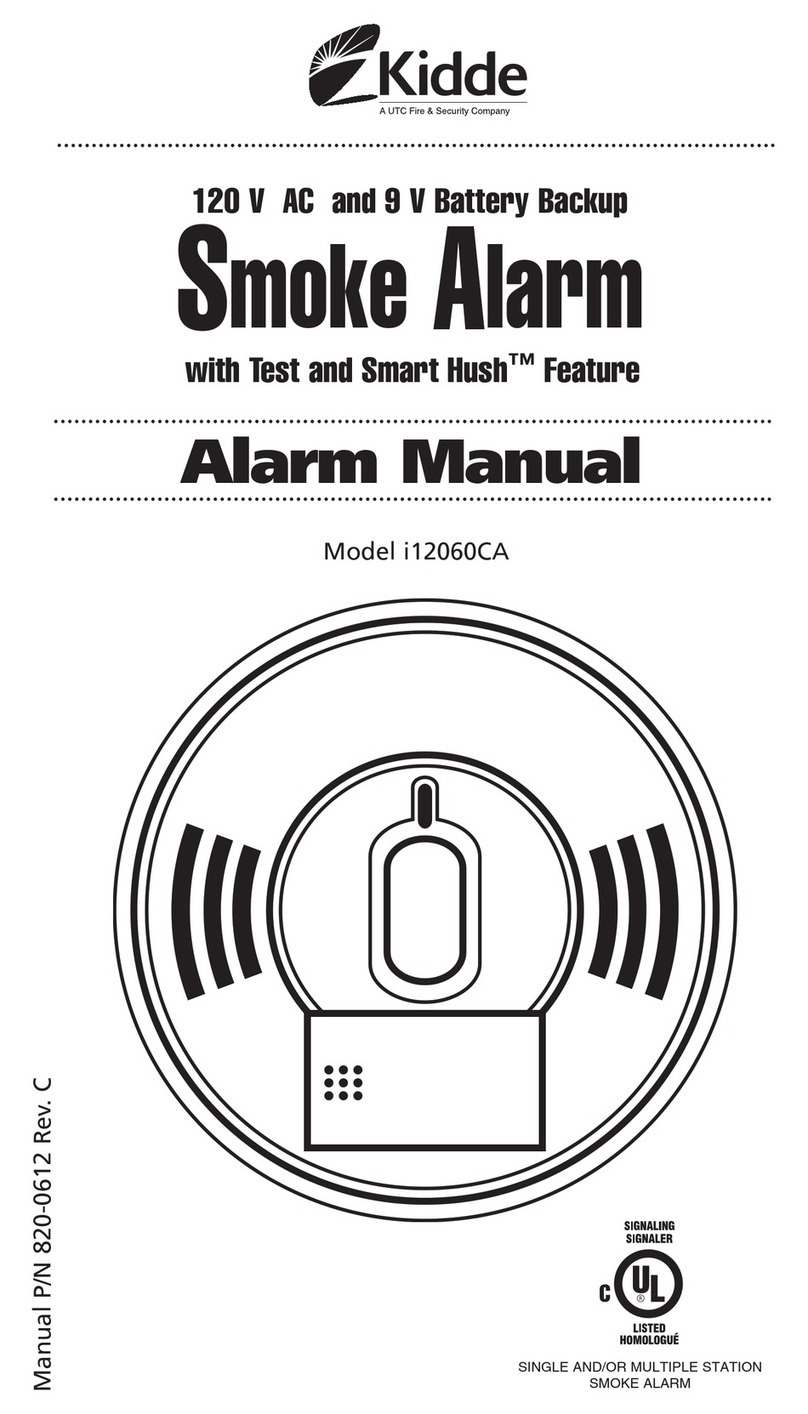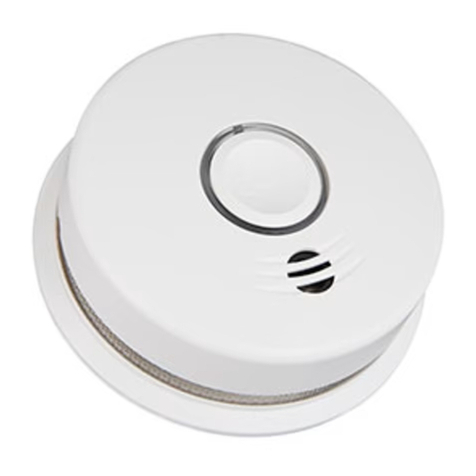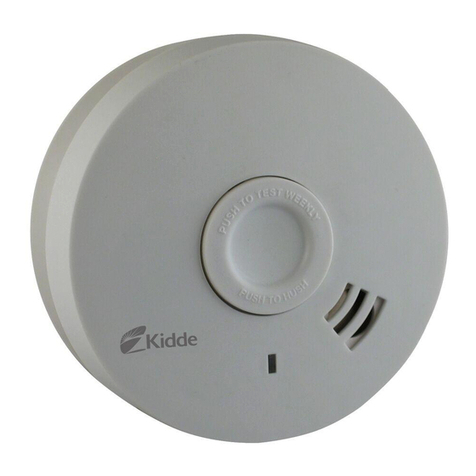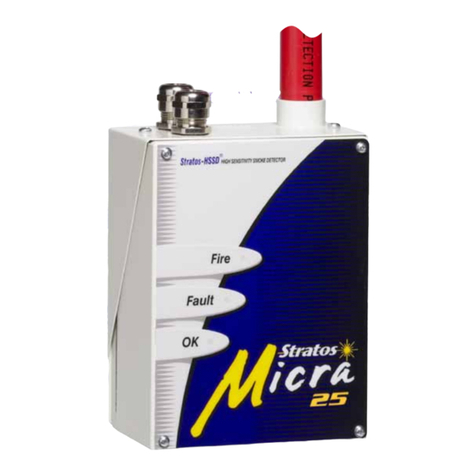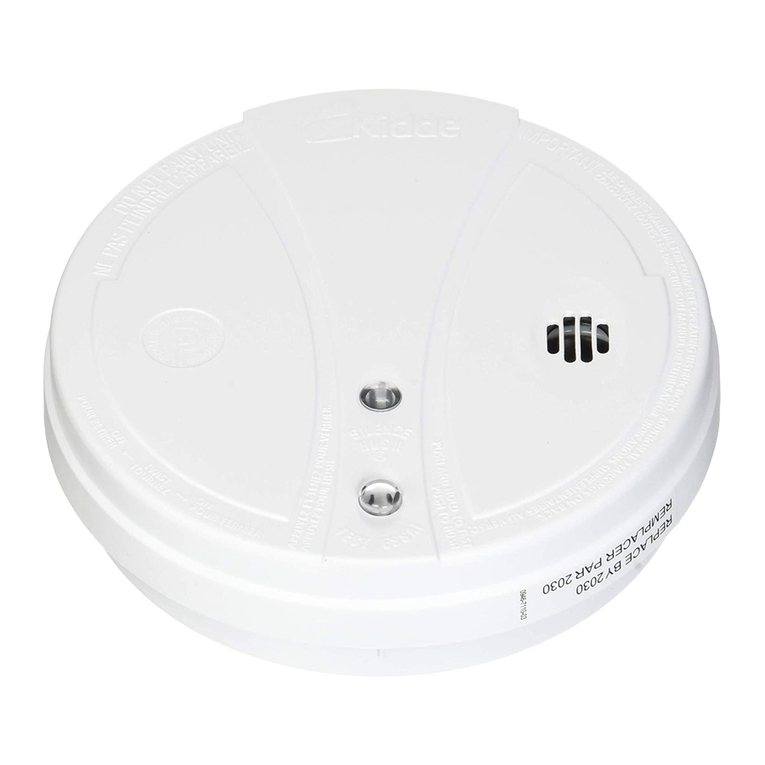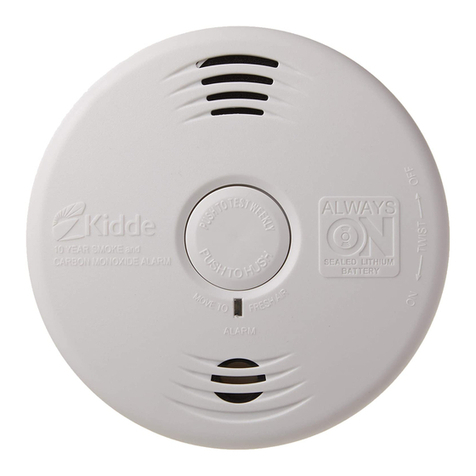1. RECOMMENDED LOCATIONS FOR ALARMS
• ocate the first alarm in the immediate area of the sleeping rooms. Try to monitor the
exit path as the sleeping rooms are usually farthest from the exit. If more than one
sleeping area exists, locate additional alarms in each sleeping area.
• ocate additional alarms to monitor any stairway as stairways act like chimneys for
smoke and heat.
• ocate at least one alarm on every floor level.
• ocate an alarm in every sleeping room.
• ocate an alarm in every room where electrical appliances are operated (i.e. portable
heaters or humidifiers).
• ocate an alarm in every room where someone sleeps with the door closed.
The closed door may prevent an alarm not located in that room from waking the
sleeper.
• Smoke, heat, and combustion products rise to the ceiling and spread horizontally.
Mounting the smoke alarm on the ceiling in the center of the room places it closest
to all points in the room. Ceiling mounting is preferred in ordinary residential
construction.
• For mobile home installation, select locations carefully to avoid thermal barriers that
may form at the ceiling. For more details, see MOBI E HOME INSTA ATION below.
• When mounting an alarm on the ceiling, locate it at a minimum of 10 cm (4”) from
the side wall. (see Figure 1).
• When mounting the alarm on the wall, use an inside wall with the top edge of the
alarm at a minimum of 10 cm (4”) and a maximum of 30.5 cm (10”) below the
ceiling. (see Figure 1).
• In homes that are not well insulated, extreme heat or cold can be transferred from
the outside to the inside through poorly insulated walls and roof. This may create a
thermal barrier which can prevent the smoke from reaching an alarm mounted on
the ceiling. If you are not sure about the insulation in your home, or if you notice that
the outer walls and ceiling are either hot or cold, install the alarm on an inside wall.
In such homes, install the smoke alarm with the top edge of the alarm at a minimum
of 4” (10 cm) and a maximum of 12” (30.5 cm) below the ceiling (see figure 1).
• Put smoke alarms at both ends of a bedroom hallway or large room if the hallway or
room is more than 9.1 m (30 feet) long.
• Install Smoke Alarms on sloped, peaked or cathedral ceilings at or within 0.9 m (3 ft)
of the highest point (measured horizontally). Smoke alarms in rooms with ceiling
slopes greater than .3 m in 2.4 m (1 foot in 8 feet) horizontally shall be located on
the high side of the room. A row of detectors shall be spaced and located within 0.9
m (3 ft) of the peak of the ceiling measured horizontally (see Figure 3).
• Install Smoke Alarms on tray-shaped ceilings (coffered ceilings) on the highest portion
of the ceiling or on the sloped portion of the ceiling within 12” (305mm) vertically
down from the highest point (see figure 4).
MOBILE HOME INSTALLATION
Modern caravans and mobile homes have been designed and built to be energy
efficient. Install smoke alarms as recommended (see Figures 1 and 2).
In older caravans and mobile homes that are not well insulated compared to present
standards, extreme heat or cold can be transferred from the outside to the inside
through poorly insulated walls and roof. This may create a thermal barrier which can
prevent the smoke from reaching an alarm mounted on the ceiling. In such units, install
the smoke alarm on an inside wall with the top edge of the alarm at a minimum of 10
cm (4”) and a maximum of 30.5 cm (12”) below the ceiling (see Figure 1).
0910-7207-03_R1.qxd:_ 2009.8.13 6:52 PM Page 2
